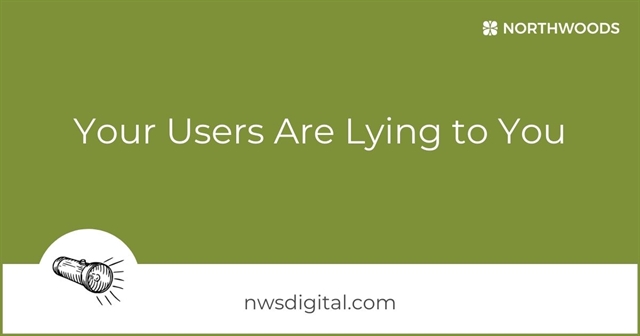By Katelyn Goerke
November 7, 2022
3 Minute Read
Updated: Nov. 7, 2022
Originally Published: March 11, 2021
Having a solid understanding of your target audience is more important than ever. With the rise of personalized digital marketing, the competitiveness of the digital landscape, and growing expectations from users, businesses must have a clear idea of what their audience is looking for in order to succeed.
One way to gather that understanding is by developing personas. Marketing personas aren’t new. They've been used by marketers for years as a way of understanding the needs and pain points of their key audiences.
But today’s personas need to do more than their predecessors. In order to develop effective personas, businesses must keep in mind the digital landscape that their marketing tactics and their users currently occupy. This is crucial, as forgetting about digital will prevent personas from being as useful as they could be.
If you’re on the fence about the importance of digitally focused personas, keep in mind the following.
Marketing and Sales Are Now Digital
For most industries, the entire customer lifecycle, in both sales and marketing, involves digital tactics. Your audience is looking for information about you and your services via digital means, whether that’s social media, search engines, on your website or in other digital spaces.
If your customers are looking for your digitally, shouldn’t you use those tactics as well? Traditional buyer personas don’t always account for the impact that digital has had on our marketing and sales processes or take into account how the user data you’ve collected could be applied across these channels.
Demographics Aren't Enough Anymore
Many traditional personas focus primarily on defining demographics and applying that demographic data to messaging and tactics for each group. But, think a little deeper about your audience. How many people in your audience share similar demographics, but have very different interactions with and purposes for their relationship with you?
Let’s take an industrial manufacturer as an example. A B2B manufacturer selling components to other manufacturers may work with individuals who fulfill a wide variety of roles within the buyer organization. They're likely interacting with members of the sales team, purchasing, or even C-suite executives. If you focus solely on demographics, you may find that your target sales team members and C-suite team share similar demographics, but have wildly different needs when it comes to their interactions with the organization. Focusing only on demographics does you a disservice, as your messaging may be significantly off.
You may also find that the demographics of an individual in a particular role vary quite a bit from company to company. By focusing on demographics, you may perpetuate stereotypes that will alienate certain customers from your organization.
Instead, use data to develop a more cohesive picture of the needs of your target audience. Why are they interacting with you? What can you provide to them that they care about? Gather data about your audience that taps into their greatest needs and areas of concern. Using this data to tailor your marketing messaging based on age, gender, or broad interests will outperform a less personalized approach any day.
Messaging Is Important, But Targeting Is Key
After creating a persona, much time is spent determining the best way to create effective messaging for the various persona groups. While crafting a message that will relate to your target audience is important, it doesn’t paint the entire picture.
Even the perfect message means nothing if your audience never sees it. Personas that keep digital strategies and tactics in mind can provide not just a snapshot of who that user is and what message relates to them, but also how to reach them.
Even better, digitally focused personas can address how users want to be reached during each phase of their research. Digital personas provide insight into what types of messaging work best on each potential digital channel, and how you can adjust your digital marketing and website strategies to account for the needs of your target audiences.
Data Drives Everything
The best personas are developed using data. That data could be collected directly from users via surveys and interviews or gathered from a market research tool. Regardless of the types of data that are used, it is crucial that the personas are created based on data, not just intuition or personal experience from employees alone.
Those same digital tactics you identified to reach your personas can be used to form the personas themselves. Digital platforms gather tons of data about your users that can be incredibly influential in persona development. If you already have users engaging with your website, social media channels or digital advertising, there is a plethora of data already at your fingertips that you can use to make even stronger decisions about your users going further.
Take a Closer Look at Your Users
Understanding your target audience is more important in marketing today than it ever has been before. But audience data and personas are only useful if they're developed with your digital tactics in mind. If you haven’t yet developed personas, or if you only have traditional messaging personas, now is the time to develop digitally focused personas that will drive your marketing strategy in the right direction.
To learn more about persona development and how Northwoods can help, visit our Persona Development services page or contact us!
Related Blog Posts

User research gives digital marketers valuable insight into what really matters to users. But, the reality is that sometimes those users lie to you - either unwittingly or on purpose. So, can you truly rely on user research to inform your digital marketing efforts?

Gathering data is critical to understanding what visitors do on your website. Here are three methods to give you the data and insights you need.

Today’s digital marketers must collect and analyze a significant amount of data. How does a marketer begin to make sense of it all? Data visualization! Here’s how to get started.